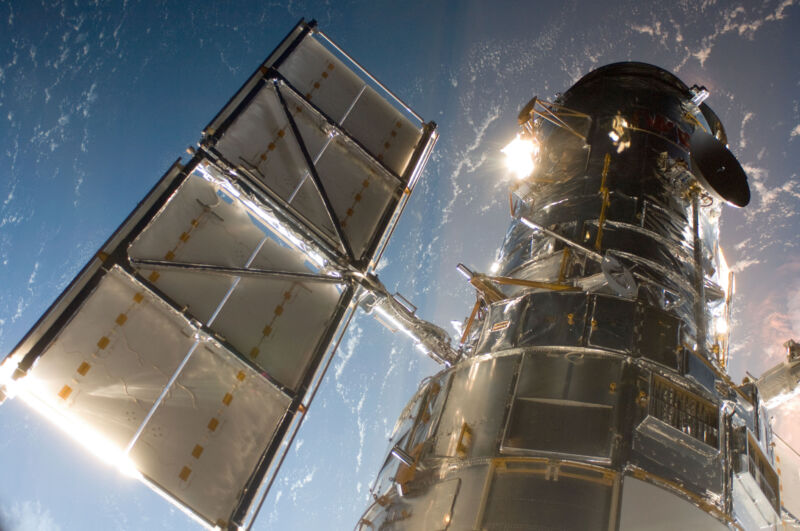NASA announced on Friday that it has switched to backup computing hardware on the Hubble Space Telescope, potentially ending over a month of uncertainty regarding the telescope's future. The success came just two days after the agency indicated that it had narrowed down the source of the original fault.
The iconic telescope has been offline since mid-June, when the payload computer started failing in attempts to write data to memory. This computer is responsible for both managing the scientific instruments and ensuring that the data they produce is sent back to Earth. While its failure didn't pose any dangers to the hardware itself, it left the telescope unable to perform any observations.
The telescope is equipped with backups for all its computing hardware (and in the case of the memory, backups for the backups). But every attempt to switch to one of these resulted in the same errors, suggesting that the problem wasn't with the memory or processing hardware but rather part of the hardware that supports the entire system. Attention eventually focused on the power supply. As NASA put it:
A series of multi-day tests, which included attempts to restart and reconfigure the computer and the backup computer, were not successful, but the information gathered from those activities has led the Hubble team to determine that the possible cause of the problem is in the Power Control Unit (PCU).
The PCU... ensures a steady voltage supply to the payload computer’s hardware. The PCU contains a power regulator that provides a constant five volts of electricity to the payload computer and its memory. A secondary protection circuit senses the voltage levels leaving the power regulator. If the voltage falls below or exceeds allowable levels, this secondary circuit tells the payload computer that it should cease operations. The team’s analysis suggests that either the voltage level from the regulator is outside of acceptable levels (thereby tripping the secondary protection circuit) or the secondary protection circuit has degraded over time and is stuck in this inhibit state.
On Thursday, NASA announced that it was starting the process of switching to backup hardware that would replace the potentially faulty power control unit. This process included commands that forced everything that exchanges data with the payload computer to switch targets to the backup hardware.
And on Friday, NASA saw success. The payload computer was brought back online and loaded the software needed for normal operations. The agency says it is monitoring the performance of the payload computer while taking various scientific instruments out of safe mode. If everything goes well, the instruments will be put through calibration procedures tomorrow, and scientific observations can start again once those are complete.



3175x175(CURRENT).thumb.jpg.b05acc060982b36f5891ba728e6d953c.jpg)

Recommended Comments
There are no comments to display.
Join the conversation
You can post now and register later. If you have an account, sign in now to post with your account.
Note: Your post will require moderator approval before it will be visible.